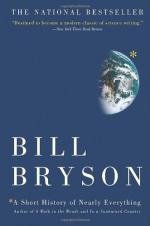|
This section contains 530 words (approx. 2 pages at 400 words per page) |

|
Part 2, Chapter 4 Summary and Analysis
Scientists in the 17th and 18th centuries were preoccupied with learning as much about the Earth as possible - its size, age, exact location in space and most of all, its origins. The colorful, multi-talented astronomer Edmond Halley entered into a wager with Sir Christopher Wren, an astronomer who designed immortal cathedrals in his spare time, and Robert Hooke. Hooke had a propensity for taking credit for other people's ideas, and is best remembered as the first person to describe a cell. Wren promised 40 shillings, an amount equal to several weeks' pay, to the first man who could determine why planets orbited in an ellipse, instead of a circle.
Halley was certain that the answer had something to do with the inverse square law. Determined to win the prize, Halley approached Sir Isaac Newton. The brilliant, solitary and paranoid...
(read more from the Part 2, Chapter 4 Summary)
|
This section contains 530 words (approx. 2 pages at 400 words per page) |

|




